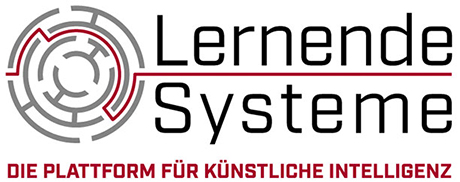Criteria for AI in the company: How the cooperation with employees is successful
The use of Artificial Intelligence (AI) in the world of work fundamentally changes the division of tasks between man and machine. Learning AI systems can perform increasingly complex tasks independently and work hand in hand with the employees. A current whitepaper from Plattform Lernende Systeme shows how the division of labour between man and AI can be shaped in the interest of the employees. For this purpose, the paper offers a catalogue of criteria that supports the design and development of AI systems and their introduction into companies.

The corona pandemic is driving the digitization of the world of work and may encourage the introduction of Artificial Intelligence. Whether in home offices, factories or hospitals - AI systems can help people to perform their work safely, autonomously and self-determinedly and to secure competitive jobs. For example, intelligent assistants or robots can relieve employees of strenuous and dangerous tasks or support them in making complex decisions. At the same time, they make it necessary to readjust the division of labor between humans and technology. "AI systems complement human capabilities. They neither have to replace employees nor compete with them," says Norbert Huchler from the Institute for Social Science Research. (ISF-Munich), lead author of the white paper and member of Plattform Lernende Systeme. "We have developed criteria for how human-machine interaction can be made complementary. This means: combining the strengths of human thought and action with the capabilities of technology so that employees benefit from AI and companies can exploit the economic potential of the systems".
The authors of the whitepaper have defined twelve criteria for good cooperation between people and AI and summarized them into four clusters.
- The first cluster is the protection of the individual against negative consequences of AI use. The systems must be secure and non-discriminatory. In the case of industrial robots, for example, the aim is to avoid accidents and injuries as well as psychological stress - for example, due to monotonous tasks. In addition to occupational health and safety, the whitepaper states that the protection of employees' personal rights and the exclusion of unjustified performance measurement are also important. AI-based assistance systems for the office, for example, analyze the data entries and personal information of employees to support them in organizational activities, research or appointment preparation. Employers must not use this sensitive behavioral data for individual performance monitoring.
- Furthermore, the trustworthiness of the AI systems must be taken into account when designing the human-machine interaction. Intelligent machines and software must remain controllable and their decisions must be explainable. In the cooperation with AI, people are often confronted with a complexity that is incomprehensible to them, the authors write. They advise that AI systems should provide employees with basic information about their functioning, goals, data and conclusions. After all, if people are to take responsibility for the actions of the system, they must be able to stop interactions or even decide against the system's recommendation.
- The third cluster focuses on the sensible division of labour between employees and the AI system. "The principle is that technology and people must support each other in their development," says Huchler. "At all levels of activity, AI can provide people with tailor-made support if the system flexibly takes into account the individual level of knowledge, abilities and needs of its user".
- Fourthly, the use of AI systems must create favourable working conditions for employees. In cooperation with AI systems, people must remain capable of acting and take on motivating tasks. AI systems must not restrict people's scope for action. The authors recommend to take care that AI does not take over those work contents that have a motivating, qualifying and health-promoting effect. Furthermore, interaction with AI systems must not prevent enriching interpersonal communication and cooperation, but rather support them in the best case.
The white paper "Criteria for Human-Computer Interaction in AI" was prepared by the working group Work/Qualification, Human-Machine-Interaction of the Plattform Lernende Systeme.
The application scenarios "Robotic tool with learning capability" and "Information butler for the office" developed by the Plattform Lernende Systeme offer vivid examples of the good cooperation between humans and AI.
Further information:
Linda Treugut / Birgit Obermeier
Press and Public Relations
Lernende Systeme – Germany's Platform for Artificial Intelligence
Managing Office | c/o acatech
Karolinenplatz 4 | 80333 Munich
T.: +49 89/52 03 09-54 /-51
M.: +49 172/144 58-47 /-39
presse@plattform-lernende-systeme.de
